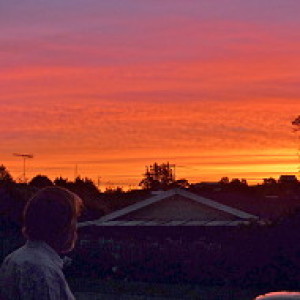My Poutama
In ancient lore the Poutama design symbolised a climb made by a folk hero, Tawhaki, to receive the three baskets of knowledge from the gods. The baskets are education, striving for excellence, and care of those in need. The Maori interpretation of Poutama is "one who supports his whanau (family), hapu (sub-tribe), and iwi (tribe)”; a leader. When looking at the construction of poutama, one sees a series of steps denoting the steps of progress and advance.
Sixteen years ago when I moved from Auckland Hospital to work at North Shore Hospital, the staff of Kai Atawhai gave me this tukutuku panel. For the preceding eight years I had worked closely with Kai Atawhai, a Maori service providing culturally appropriate care alongside Pakeha medicine.
They explained that Poutama translates as Stairway to Heaven. and explained also that they had personalised the making of it by way of the vertical central line symbolising the bringing together of Maori and Pakeha, while maintaining their unique identities.
I was humbled by this gift, and its interpretation.
Tukutuku panels are one of the three types of traditional panels in Whare Whakairo-Wharenui (meeting houses); all refer to ancestral lineage and genealogy. The shapes and patterns are an expression of the power and spirits of the ancestors (genealogical mana).
Tukutuku patterns vary considerably from iwi to iwi throughout the land. Certain designs are associated with particular iwi, some may have different names in different regions, or the names may be spelled in various ways.
The tukutuku patterns form an integral part of the storytelling of each Whare, and add aesthetic beauty to the interior of the House. In contrast to the spirals, swirls and curved lines of the carvings and kowhaiwhai paint-work, the straight lines that form the basis of all tukutuku design provide a distinctive component in the overall art form of each House.
The traditional tukutuku panel is a lattice-like frame made up of vertical stakes which form the back layer of the frame (can NOT be seen); horizontal rods that form the layer of the panel (that can be seen by the viewer); and flexible material, being both pingao and kiekie which when threaded through the rods and stakes form the patterns and designs.
Toetoe stalks were the kakaho (vertical stakes). Stalks are arranged close together to form the single back layer. Flower ends and butt ends are laid alternately to maintain an even width.
Wooden slats (horizontal rods), coloured with wood-stain or paint, are placed close together. These completely covered the kakaho, forming the exposed layer on which the pattern is viewed. The leaves of the kiekie, (an epiphyte; a perching plant found growing in the branches of trees) are gathered and bleached to be used for the colour white in the patterns. Bleaching means that the leaves are stripped, boiled and hung out to dry in the sun and wind. Strips are also dyed if the pattern requires the addition of colours.
Pingao (a coastal plant growing on sandhills) is used for its rich gold/orange colour. Preparation requires that pingao is gathered and sized into lengths, then hung out in a shady spot. Stripping is done on the frame.

Comments
Sign in or get an account to comment.


